SEARCH






|
|
|
|


by Editor Vicente Dolz
Jürgen Schadeberg was born in Berlin in 1931. Someone who has given his life to photography, who had already worked as an apprentice photographer in Hamburg during his teenage years. At the age of 20, he migrated to South Africa and became an Art Director in Drum Magazine.
During the 50’s he took photos of historical moments, which were crucial in the South African citizens’ lives, especially during Apartheid.
In the 60’s, he left South Africa and lived in London, working as a journalist photographer in Europe and America. In the 70’s, he was a teacher in New York, London and Hamburg.
He has carried out numerous expositions around several countries, received prizes and mentions in various languages and edited and published over 30 books, as well as producing 15 documentaries about South African history. Always accompanied by his wife Claudia, who was also a producer, he took photos for over 70 years and his collection counts more than 200,000 negatives.
This is only a little presentation in which I could go on and on, but let's start the interview and learn a bit more about this fundamental photographer.
Jürgen, good morning. It is a real pleasure for us to be able to talk to you for a while to get to know better and hear about a few stories from your extended photographic life. The first question inevitably is, how did everything start?There were many reasons for me to leave Germany in 1950. My mother already moved to South Africa in 1947. That year I left Berlin and moved to Hamburg where I worked as a trainee with the German Press Agency. The main reason I left Germany to go to South Africa was because I found the former Nazis were still active in Germany and nothing had essentially changed in the psyche of the German people. My first choice was to work in New York as a photo journalist but this was financially impossible so with the help of my mother I emigrated to South Africa in 1950.
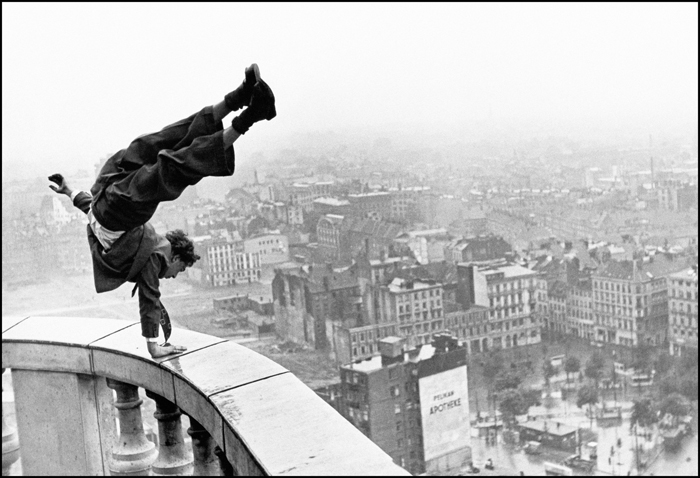
'Handstand on Hamburg'
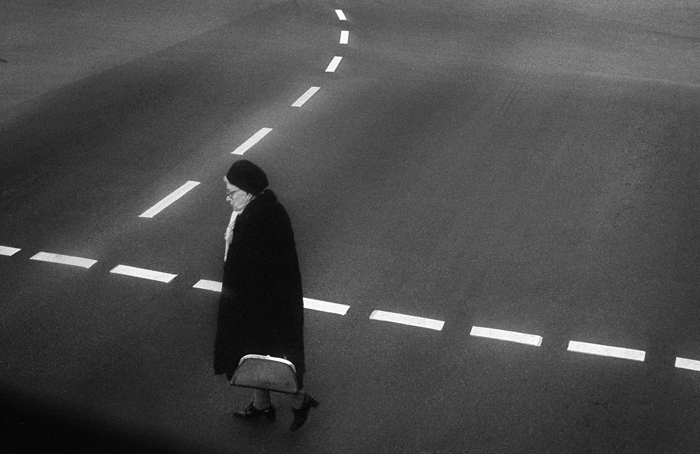
'Crossing lady - Berlin'
Which circumstances took you to South Africa?
Working as a freelance photographer for a black photo magazine such as Drum made one very unpopular in the white society but I was very much accepted by the black world who appreciated the rarity of a white person interested in the black social, cultural and political scene.
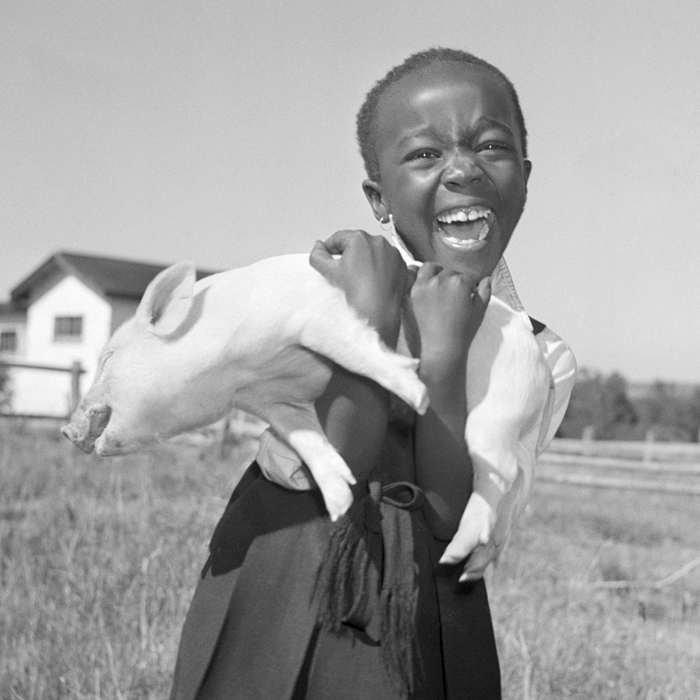
'Visit to a farm'
Which memories have you got from the whole Apartheid process and how did you survive as a photographer in the middle of the turmoil?
I documented the pre-Apartheid, Apartheid and post-Apartheid in South Africa over a period of 35 years and I was happy to witness the positive changes in 1994 when Mandela became President, although there was still a long way to go.
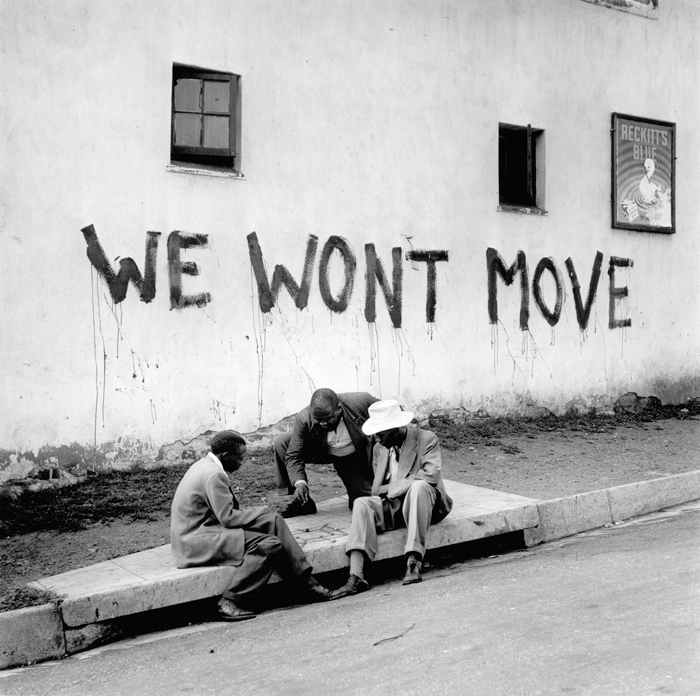
'We won't move'
You left Nazi Germany and came across Apartheid. Was this vision of the world that you perceived affecting your photography?
I went from the frying pan into the fire – from a racist Nazi Germany to a racist unjust South Africa. Growing up in Berlin during the war gave me an awareness about injustice so I was shocked but mentally prepared for the parallels in the two countries.
What made you work for The African Drum, which did not seem to be the safest bet?
When a job came up on Drum Magazine I was told by many that it would not be suitable as you would be working alongside blacks, the pay would be low and there were certain dangers involved – all these factors made me more interested and ready to take the job....without regret.
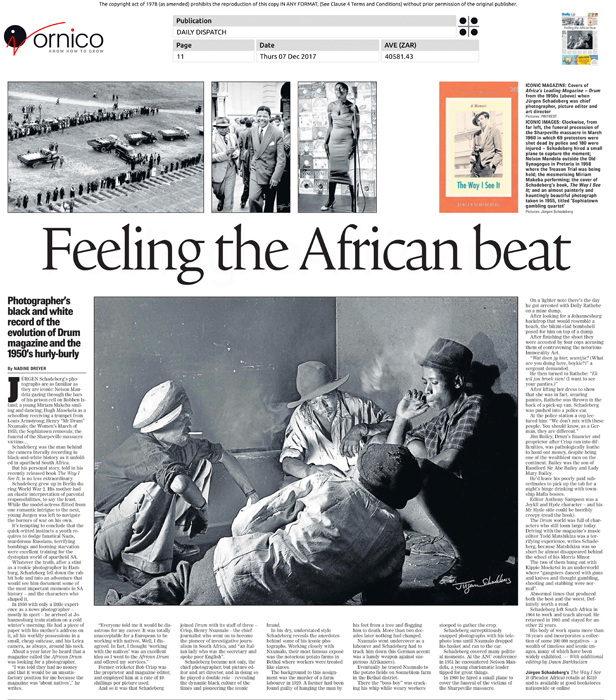
'Daily Dispatch'
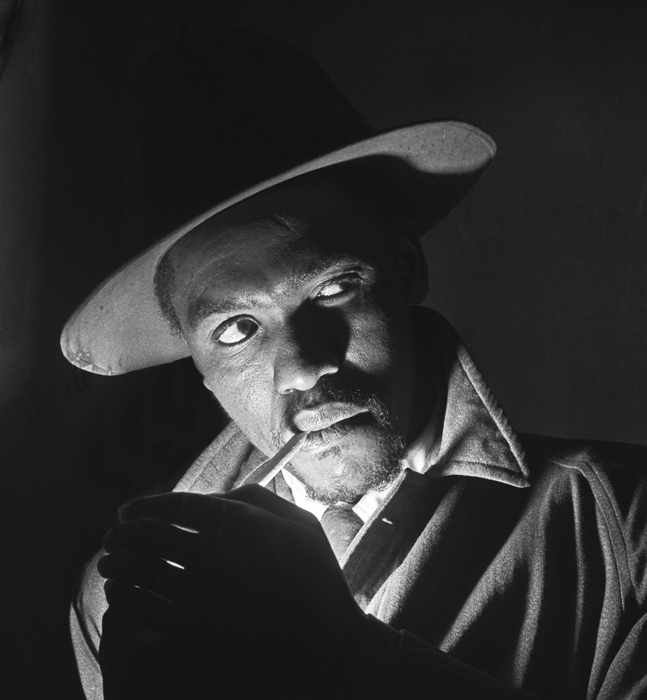 'Lighting up Johannesburg'
'Lighting up Johannesburg'
You were arrested for taking photos of a female singer of colour (Dolly Rathebe) and you faced the Immorality Law which forbid interracial relations. What is your memory of that event?
In 1952 I was asked to take beach photos of blues queen Dolly Rathebe. Since there were no beaches in Johannesburg we improvised using a mine dump – sand dunes created by the coal mines. A white witness to the photo shoot reported us to the police as he assumed we were contravening the Immorality Act (no physical relations allowed between whites and blacks) and we were both arrested.
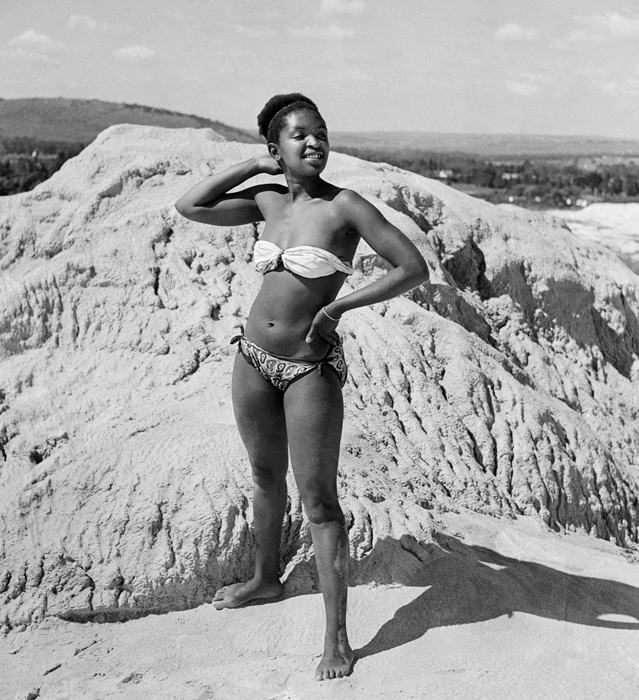
'Dolly Rathebe on a mine dump'
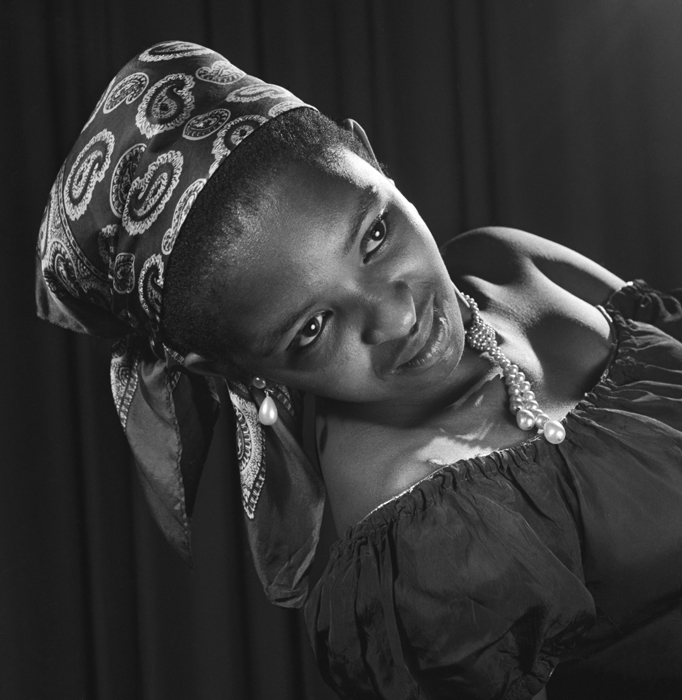
'Dolly Rathebe portrait'
Your iconic image of Mandela has gone around the globe, did you realise the importance that photo would have on South Africans’ lives at the time?
I did not realise the importance of this Mandela image at the time – I took it in 1993 as part of a book and film project entitled “Voices from Robben Island”. I am happy to see that it has become a popular image worldwide.
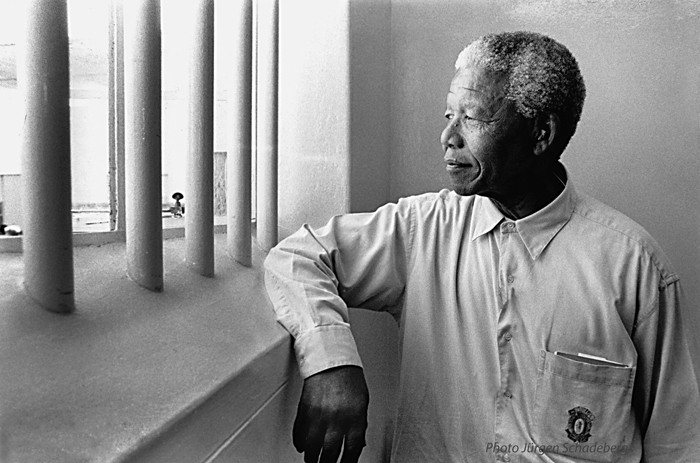
'Mandela in his cell on Robben Island
How was it to work as a journalist photographer in the 70’s for important journals? Do you think this has changed nowadays?
In Europe during the 70's, I focussed on social stories such as the Gorbals in Glasgow, the non swinging sixties in the UK and the Provos in Amsterdam. At that time magazines and newspapers such as New Society, The Sunday Times, The Observer, the Weekend Telegraph Magazine, Die Zeit welcomed stories of this kind. Nowadays social issue stories are very hard to get published.
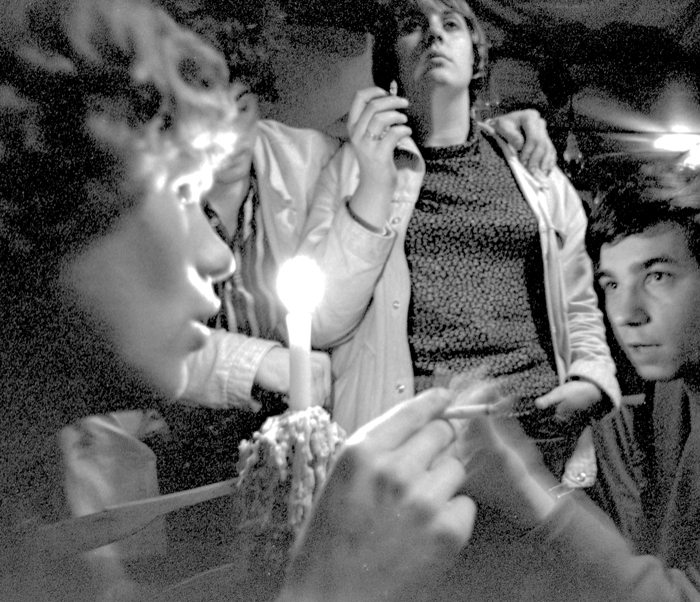
'Provos Amsterdam'
Which photography teams did you work with?
I have never worked with a photography team – I have always worked independently.
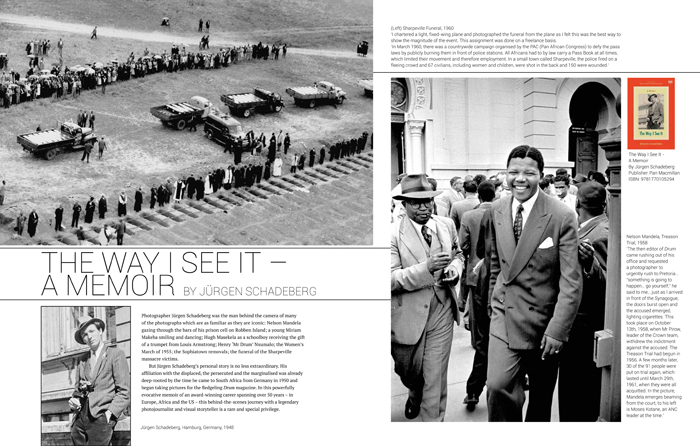
'Classic Feel'
In the 70’s you met your partner (who also was a photographer?) and you have worked together since then. How did this long-lasting collaboration begin?
I met my wife and partner Claudia in the seventies in London when she was a television researcher/producer at the BBC, not a photographer. We found that we had very similar interests in photography and films and when we moved to South Africa in 1985. We worked together on a documentary series, dramas and several photography projects. We also published a number of photo books related to black life. After 35 years, this collaboration still continues today.
From all your exhibitions, which one would you rank as the top one?
I would consider my recent Leica Hall of Fame retrospective exhibition in 2018 as one of my better shows. It is currently at the Leica Gallery in Prague and will then tour Europe.
Our featured documentary “Have you seen Drum recently?” – a 35mm 75 minute film – is my favourite. It was made in 1987 and was our first film – it shows unseen archive footage from the fifties, 33 pieces of original music from the 50's that we found in the basement of a record company, and many rare black and white photos.
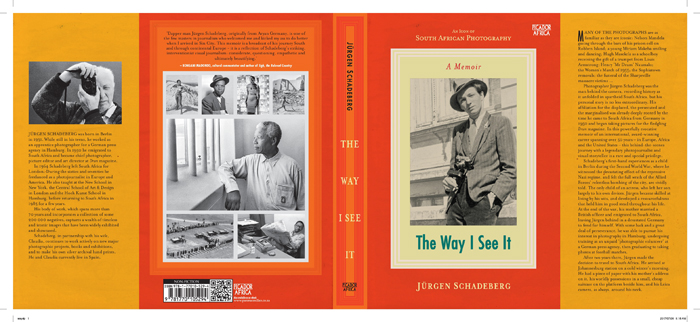
Memoires – The Way I See It
Which documentary from the ones you have filmed would you recommend me as the top one? Which photo has given you the most satisfaction?
It’s almost impossible to choose. They are all my favourites!
How was your photographic incursion into jazz?
My interest in jazz started at the age of 11 when I was given some Louis Armstrong records which I played on my little gramophone during the Berlin bombing in the air raid shelter despite the complaints of the others who exclaimed “stop playing this jungle music”.
My interest in Jazz in South Africa grew as it signified one of the few forms of defiance for black people against the Apartheid system. We used jazz in many of our films and produced a book about six decades of jazz in SA.
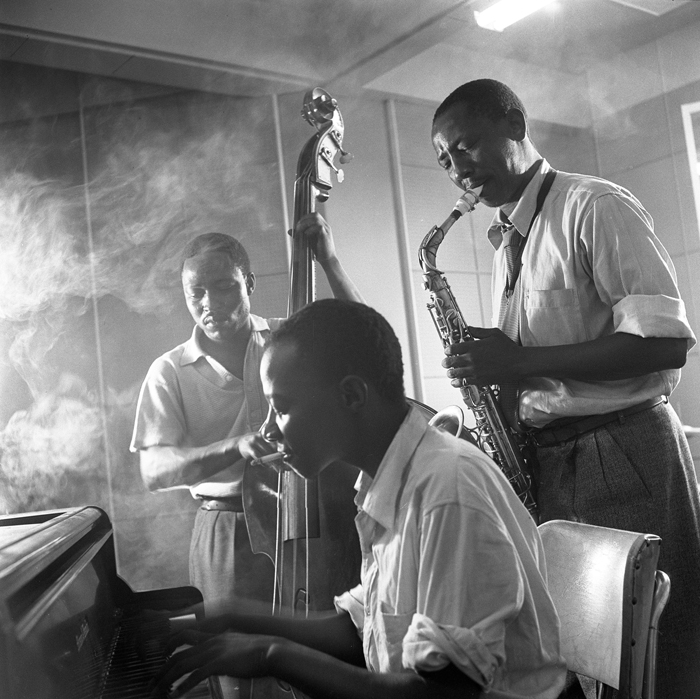
'The Three Jazzolomos'
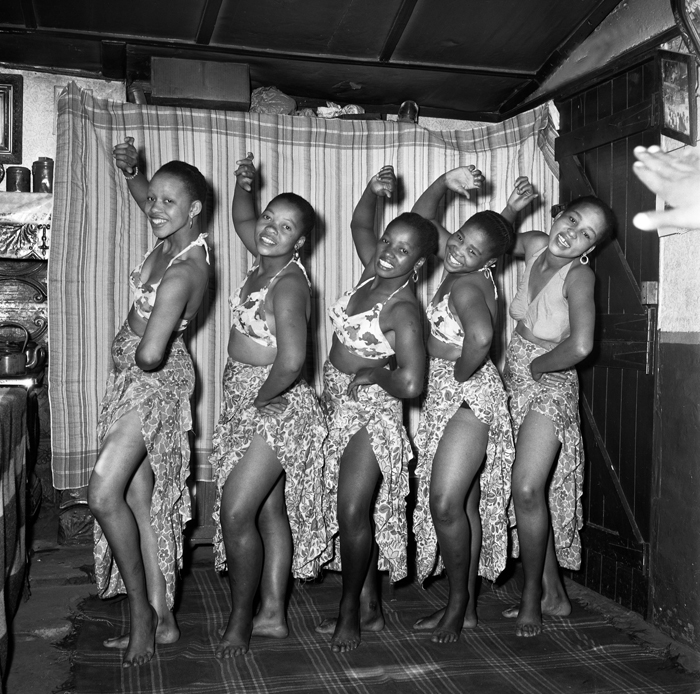 'The Gay Gaieties'
'The Gay Gaieties'
How did you end up in this small village in Valencia (Barx) where you currently live?
When we left South Africa in 2007 we went to live in France first, then in Berlin and finally decided to move to Spain. It was mainly by chance knowing some people in the Valencia province, that we ended up in our little mountain village of La Drova.
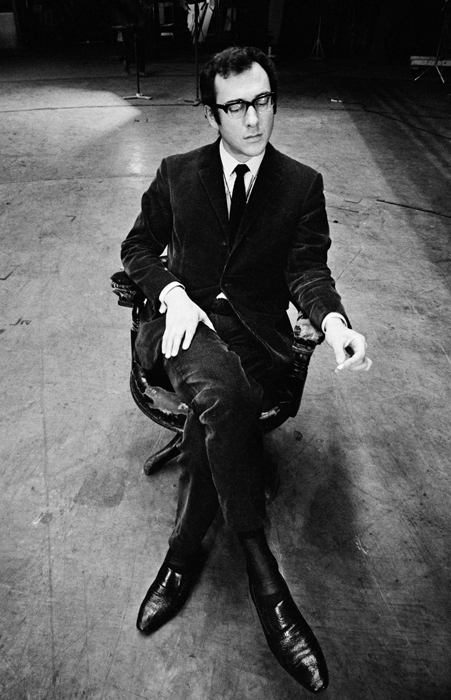
Harold Pinter
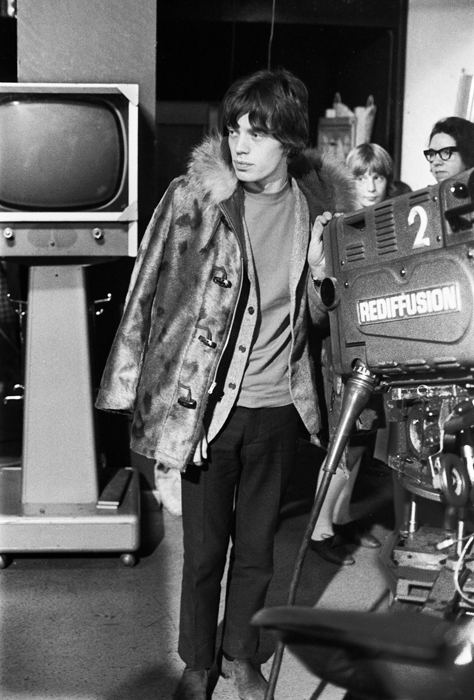
Mike Jagger
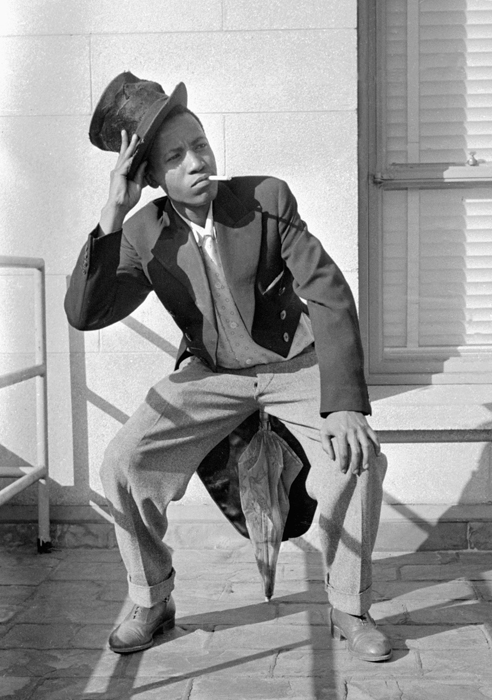
Casey Motsisi
You chose black and white in your work but, in which occasions have you carried it out in colour and why?
In fact, I was shooting in colour since the 50's when I developed my film rolls myself. At that time there was only a little demand for colour pictures until the late fifties with the emergence of television in the UK and the new colour magazine supplements for which I worked.
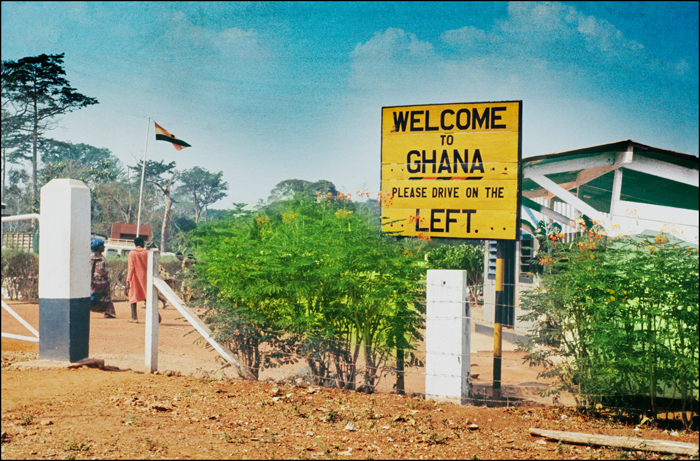
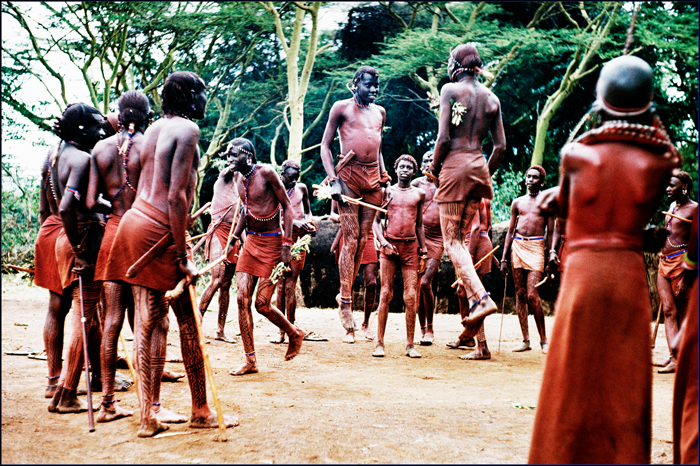
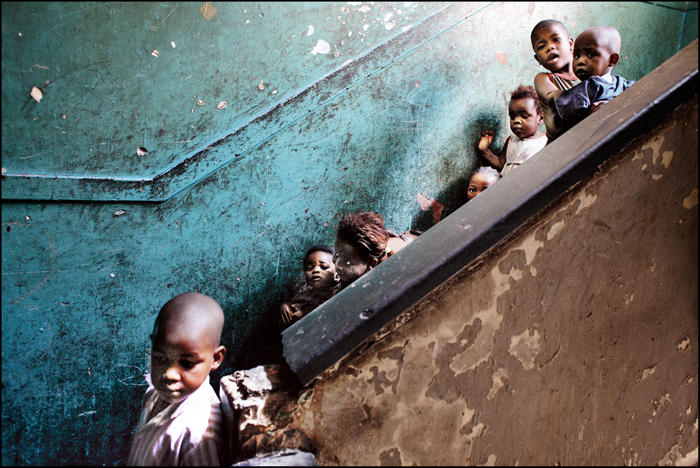
What do you think about the selfie trend? Why do we not give our camera or phone to someone else so that he takes the photo for us, as it used to be done?
Selfies are a way of recording memories. One of my favourite recent colour photos is from a group of people taking a selfie of themselves on Gandia beach...it works well.
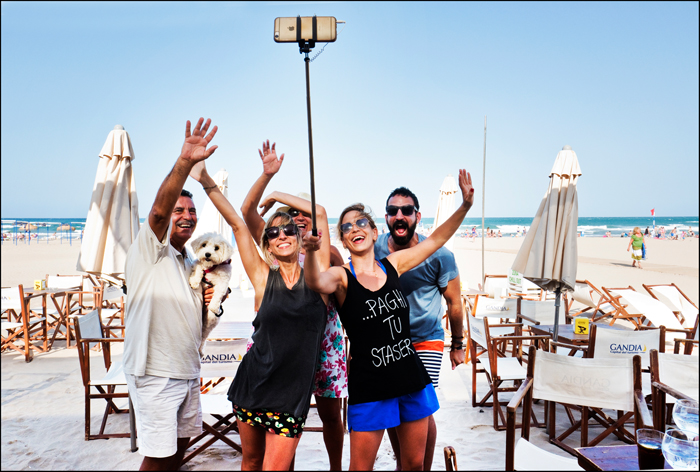
I find it hard to end this interview, especially cause of your life experience. You have so many things to tell us that they would not even fit in a thousand interviews. ;-)
Thanks you so much for your fine collaboration, dear Jürgen.
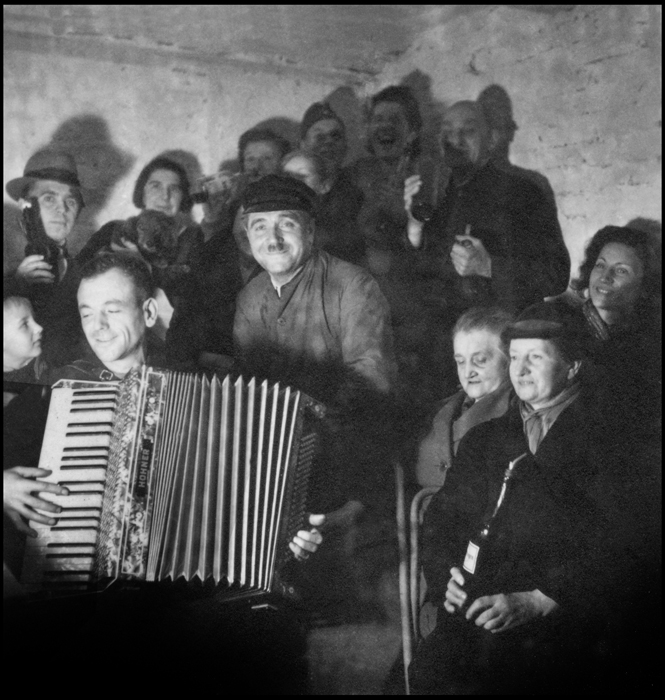
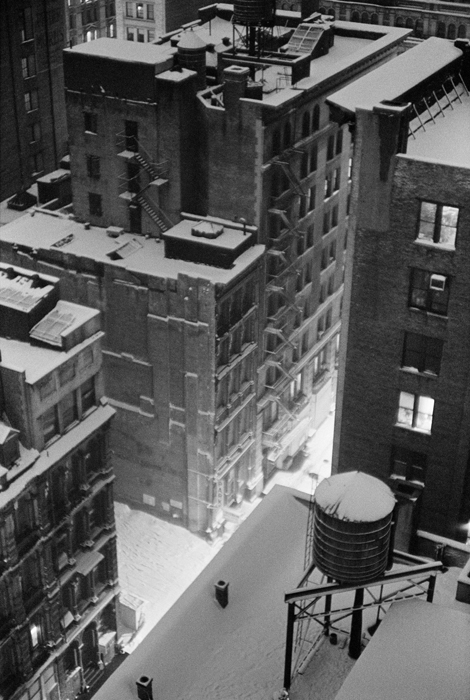
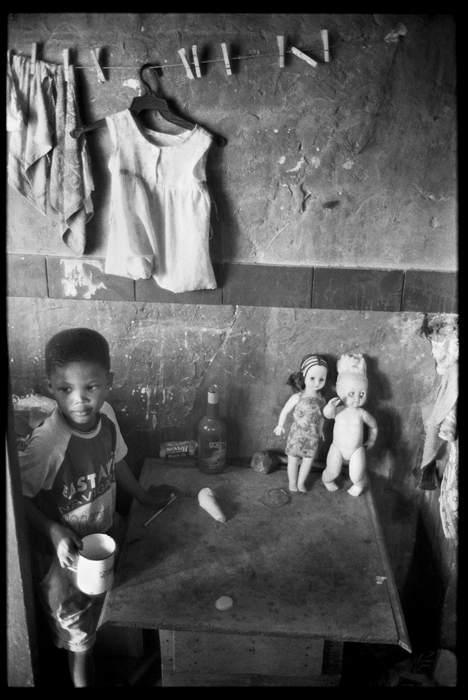
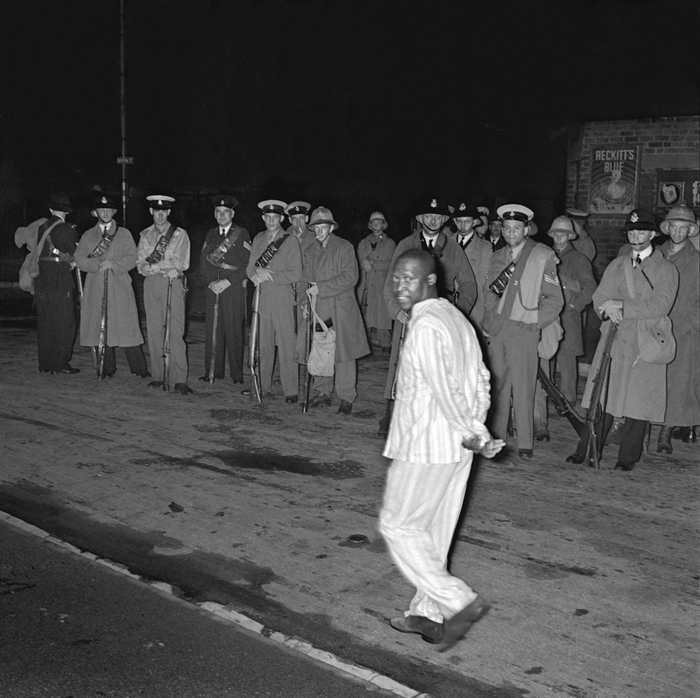

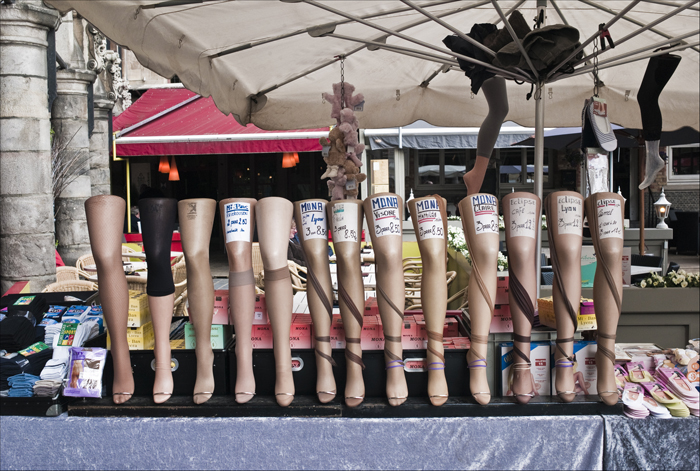
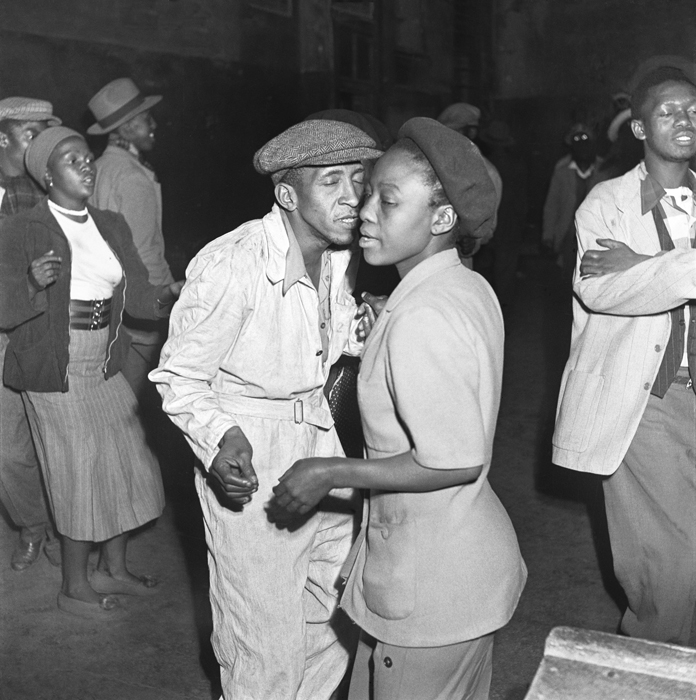
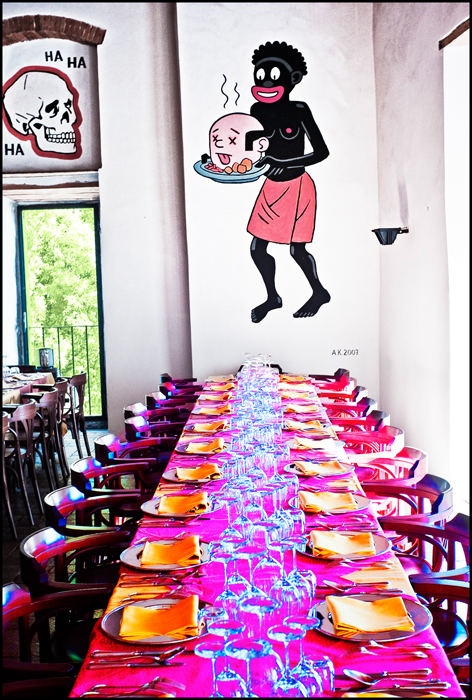
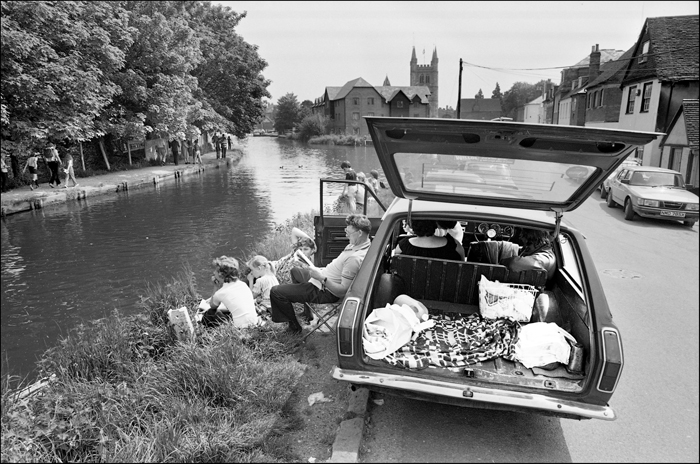
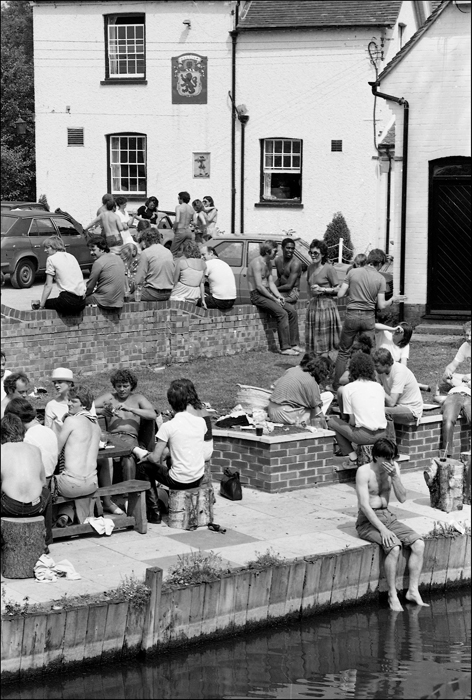
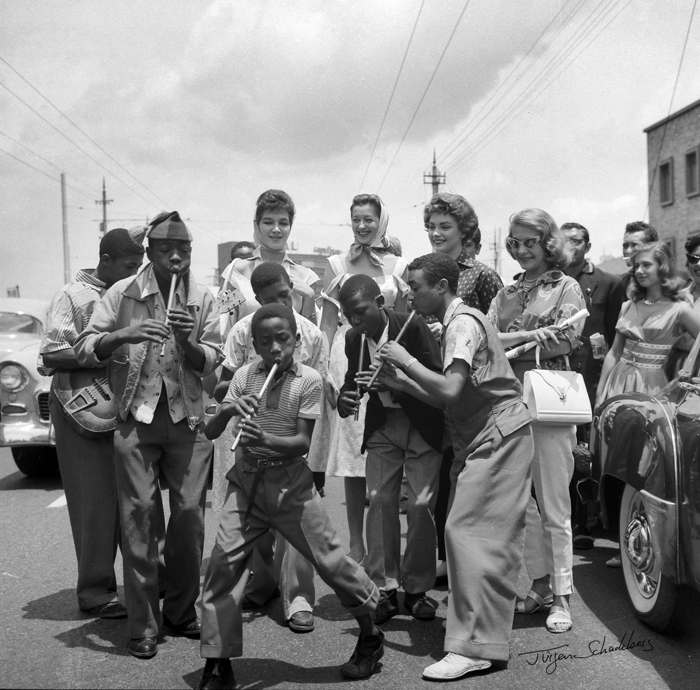
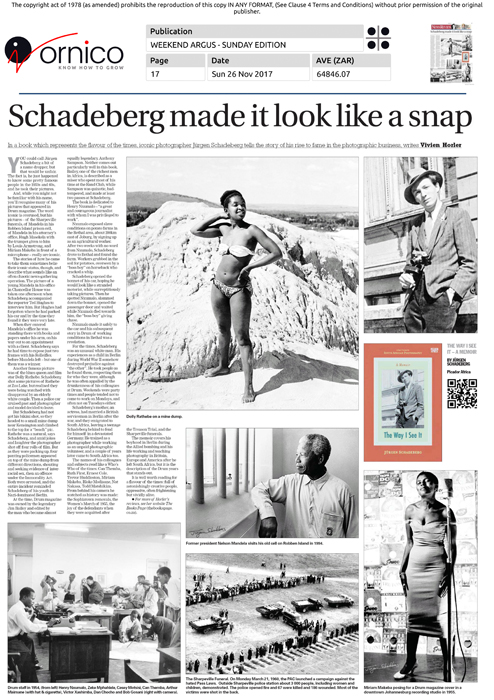
 | Write |
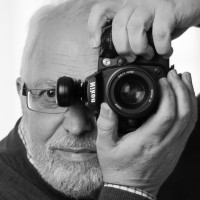 | Eduardo Blanco García PRO Thank you, Jürgen Schadeberg. Thank you Yvette. |
 | Yvette Depaepe CREW Thanks for your appreciation, Mario Eduardo! Editor Vicente Dolz did a great job interviewing Jürgen Schadeberg, indeed! |
 | Tales Yuan Great photos! Thanks Vicente and Yvette. |
 | Yvette Depaepe CREW You're welcome, dear friend! It's a honour to 1x to publish this interview from a great photographer. |
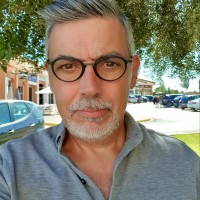 | Vicente Dolz Thanks Tales! |
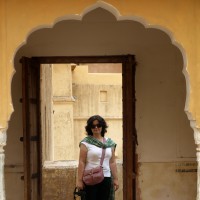 | Diana Popescu Impressive photos and interview! Thank you for this opportunity to get to know a great photographer and a wonderful person. I will be soon visiting South Africa and couldn’t have a better opportunity to know more of the place I am going to visit. Thank you for the great work Yvette and 1x editorial team. |
 | Yvette Depaepe CREW Thank you, Diana! All honour goes to Jürgen Schadeberg and of course to Vicente Dolz who led this great interview ;-) |
 | Vladimir Asriyan What could be more interesting than the history of human life as well as the history of the photographer in his photos. It is always very interesting and informative. Thanks Vicente! Thanks Yvette!
|
 | Yvette Depaepe CREW Thank you Vlad! Always great to post an interview with such a great and worldwide known photographer... |
 | Vicente Dolz Thank you Vladimir.
|
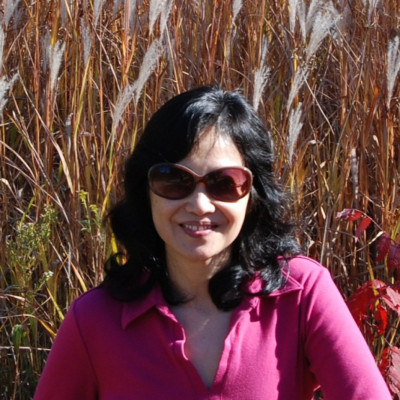 | Leah Guo PRO Impressive interview and great photos that full of history. Many thanks to Editor Vicente and photographer Jürgen! |
 | Yvette Depaepe CREW Thank you so much for your appreciation for this great photographer and for Vicente who did a great job, Leah! |
 | Vicente Dolz Thanks Leah !
|
 | Yvette Depaepe CREW Big thanks to Editor Vicente for leading this interview. Fantastic work! |
 | Vicente Dolz Thank you, Yvette
|
 | Yvette Depaepe CREW Many thanks for allowing us to publish your interview and your amazing strong meaningful work, dear Jürgen! 1x is proud a highly appreciates it.
|